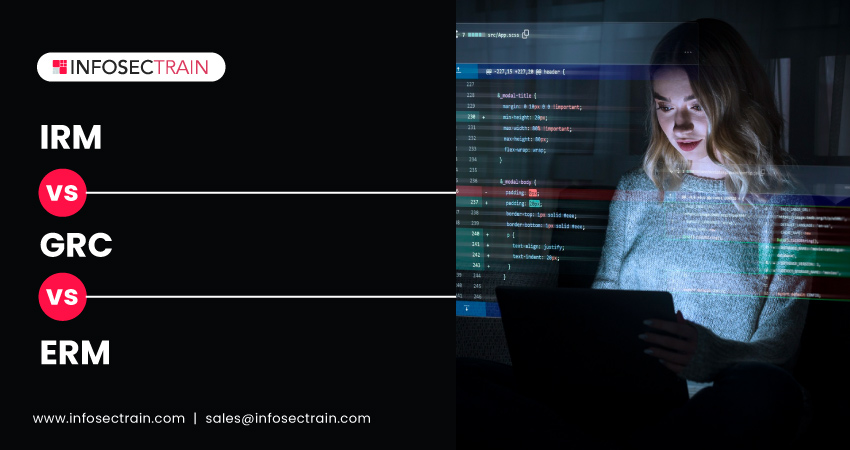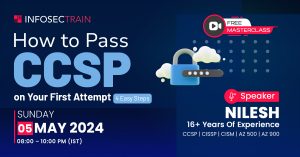IRM vs. GRC vs. ERM
In today’s rapidly evolving business environment, organizations are constantly exposed to various threats, from cybersecurity threats to regulatory compliance challenges. To effectively navigate this complex landscape of risk management, it’s essential to understand three crucial terms in risk management: IRM (Integrated Risk Management), GRC (Governance, Risk, and Compliance), and ERM (Enterprise Risk Management).

Introduction of Integrated Risk Management (IRM)
IRM (Integrated Risk Management) is a multifaceted approach that involves managing various aspects of risk within an organization. It encompasses a comprehensive strategy to improve decision-making and performance through a holistic view of an organization’s risk landscape. Here are the key attributes of IRM:
- Strategy: IRM emphasizes the development of an overarching strategy for risk assessment and optimization. This involves the establishment of robust governance, risk, and compliance (GRC) measures.
- Assessment: IRM involves cataloging potential risk areas, including the identification, evaluation, and prioritization of risks within a given system. It focuses on assessing vulnerabilities within an organization’s technological infrastructure.
- Response: In IRM, response systems are developed to mitigate and remediate vulnerabilities as they are identified. It is a proactive approach to addressing risks.
- Communication and Reporting: IRM incorporates robust communication and reporting mechanisms to effectively document and report identified risks to organizational leaders and stakeholders.
- Monitoring: Continuous monitoring of vulnerabilities, GRC measures, risk ownership, and compliance is a crucial aspect of IRM. It ensures that risk management efforts remain dynamic and responsive to evolving threats.
- Technology: IRM leverages technology, often as Software-as-a-Service (SaaS) platforms, to facilitate risk management. These platforms integrate various risk-related aspects, including dashboards, monitoring, and metrics.
Governance, Risk, and Compliance (GRC)
GRC (Governance, Risk, and Compliance) represents an overarching approach to critical cybersecurity initiatives, encompassing three core components:
- Governance: The development of policies that define how an organization manages its data, including usage, transmission, storage, and protection.
- Risk: Evaluate inherent and introduced risks within IT and business systems and implement measures to manage them effectively.
- Compliance: Ensure that the organization adheres to relevant industry and government regulations, both internally and externally.
Enterprise Risk Management (ERM)
ERM (Enterprise Risk Management) is another method of evaluating risk within a business but focuses on the overall impact of risk on business operations. ERM seeks to understand, analyze, and mitigate risks across all aspects of an organization. Here’s what differentiates ERM:
- Scope: Enterprise Risk Management (ERM) adopts a comprehensive perspective on risk management, encompassing all aspects of a business’s operations. It assesses increased risks, particularly in the context of growth, scalability, and new technologies.
- Business-Centric: ERM evaluates the relationship between business decisions and cybersecurity vulnerabilities. It assesses how these decisions introduce risks and affect the organization’s objectives.
IRM vs. GRC vs. ERM
IRM (Integrated Risk Management), GRC (Governance, Risk, and Compliance), and ERM (Enterprise Risk Management) are all related concepts in the field of risk management, but they have distinct focuses and purposes. Here are the key differences between them.
| Aspects | Integrated Risk Management (IRM) | Governance, Risk, and Compliance (GRC) | Enterprise Risk Management (ERM) |
| Objective | Helps organizations make informed decisions in the context of their overall business strategy. | Ensures that an organization operates efficiently, ethically, and within legal boundaries. | Enhances the ability to achieve strategic goals and maximize value. |
| Focus | A holistic approach to managing all types of risks across the organization. | Framework focusing on governance, risk management, and compliance activities. | Specific approach to managing risks that could impact strategic objectives. |
| Scope | It includes financial, operational, strategic, and compliance risks. | Emphasizes governance, compliance, and risk management, often within specific functions or departments. | Concentrates on aligning risk management with strategic goals and objectives. |
| Integration | Integrates various risk types and provides a comprehensive view of risks across the organization. | Integrates governance, risk, and compliance functions to ensure alignment. | Integrates risk management into the organization’s strategic planning and execution. |
| Components | Combines risk assessment, risk mitigation, and strategic decision-making. | Combines governance, risk management, and compliance activities. | Focuses on risk identification, assessment, response, and monitoring. |
| Technology Integration | It often involves using technology and software solutions for data analysis and reporting. | It utilizes GRC software to streamline compliance and risk management processes. | It involves technology for risk assessment and monitoring. |
Conclusion
Risk plays a fundamental role in the world of business, regardless of the organization’s size or structure. In today’s dynamic business environment, large and small to midsize businesses increasingly embrace cloud technology and big data to support modern commerce. Employing risk management as a guiding principle is essential for crafting enduring and effective business strategies.
Integrated Risk Management (IRM) is of utmost significance when it comes to monitoring, ensuring compliance with regulations, and safeguarding sensitive data as it moves within, into, and out of the organization.
InfosecTrain’s ISO 31000 Risk Manager training course is a comprehensive framework offering valuable guidance on risk management principles and establishing a robust risk management framework. This standard is instrumental in aiding organizations by furnishing essential directives for managing diverse risks associated with all facets of their business operations.




 1800-843-7890 (India)
1800-843-7890 (India) 
